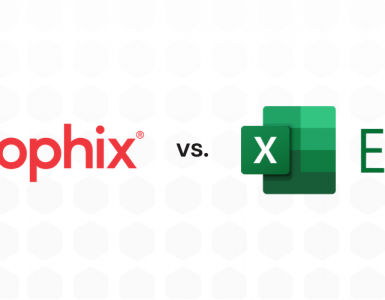In a study conducted by Deloitte, nearly 73% of executives and board directors said their companies are under increasing pressure to measure non-financial performance indicators.[1]
Non-financial performance indicators provide invaluable context for the data that finance teams rely on. However, company boards are often only exposed to a summarized version of events, otherwise known as the board book.
Traditionally, board books are 200 to 300 pages of financial metrics and they “often [contain] detailed results by product, division, etc.[2]”
And while financial metrics are critical to understanding the health of a business, 92% of respondents agreed that financial indicators alone cannot adequately capture their companies’ strengths and weaknesses.[3] Board books often lack “sufficient detail to explain trends or put directors in a position to properly assess the situation and make decisions.”[4]
Katya Forsyth, C-Suite Advisor at Positive Venture Group, asserts that “what is lacking in most board books is forward-looking indicators, such as customer engagement and retention data, that show where the business is headed.”
So, the question is, how can the Office of Finance improve board books to provide executive boards with the information they need to make informed, strategic decisions?
In today’s blog, we will examine four ways to craft the ultimate board book.
Want to craft the ultimate board book? Download our guide.
Data in a Volatile Business Environment
In recent years, businesses have seen a rise in stakeholder scrutiny as a direct result of the volatile market. An increasing emphasis on technology has many companies concerned with how they will fare in the “digital revolution.”[5] But how does this affect the creation and distribution of board books?
A businesses’ executive board is charged with helping management navigate risks and capitalize on opportunities. As boards become increasingly concerned with business-model disruption, changing global conditions, and cybersecurity threats, annual board strategy sessions need to be augmented with more frequent interactions to chart company progress and opportunities.
More frequent board meetings call for increased involvement from finance teams, who must collect, validate, and distribute the reports. With more valuable information in your board book, your executive board can use their expertise to make informed strategic decisions.
Create a board book with forward-looking indicators – download now.
Focus on Inputs (Drivers), Rather Than Outputs (Results)
The first step to improving the quality of information in your board book is to shift your focus from drivers to results. Numbers (financial data) must be placed into context for the board, otherwise it’s difficult to determine what is driving the business’ success.
Wondering how to put your data into context? Our guide has the answers.
When Deloitte surveyed executive boards about their primary concerns, customer success and product/service quality ranked higher than financial data[6]. By shifting your finance team’s focus to non-financial metrics, your board book can focus on “absolute performance, historical trends, and performance relative to market,” allowing your board to have a greater understanding of the business as whole.
Focus on Investments
As board books are revised to include a stronger focus on non-financial metrics, investments that drive organic growth should also be reviewed by your executive board.
Instead of focusing only on large purchases, boards should have information readily available to them to review large investments, such as research and development, advertising budgets, and salesforce headcount.[7]
Our guide will show you how to incorporate non-financial metrics into your board books.
These investments and expenditures can significantly impact the viability and profitability of a business and so, your board should have visibility into “what level of organic investment is required to achieve long-term goals.”[8]
Data at an Individual Level
Often, board books provide a high-level overview of the business, divorcing the data from its significance at an individual level. Showing results by individual manager increases data accuracy and accountability, so the board can pinpoint exactly where profitability is low.
Stanford’s Building a Better Board Book suggests that “supplementing revenue information with cost data (cost of goods sold; sales, general, and administrative and other relevant costs), further increases accountability by providing a profit and loss statement associated with each manager and allows for better performance measurement in computing managerial bonuses.”[9]
Incorporate individualized data into your board book with our guide.
Investigate Outliers & Outperformance
While it’s important to focus on key business drivers in your board book, executive boards should also investigate outliers or outperformance in any line of business.
Boards should be able to evaluate what caused the anomalies and whether they are sustainable over the long-term. If these trends are driven by “one-time price promotions, product end-of-life, or competitor disruptions,” they are likely not sustainable and should be brought to the board’s attention to avoid disappointment in organizational performance moving forward.[10]
The Power of Automation
Many companies can spend more than two weeks collecting data for their board books. With an increasing need to include both financial and non-financial metrics, this process has the potential to exceed over three weeks of preparation.
Many companies leverage automation to assist them in compiling the data for their board books, giving them a significant competitive advantage. Adopting a solution that centralizes both financial and non-financial data can significantly reduce the time needed to compile, organize, create, and distribute a board book.
Automate your board book creation with CPM software – download our guide.
Companies who have adopted Corporate Performance Management (CPM) software can also templatize their board book, allowing them to generate a unique report in a couple of hours

A Better Board Book
After you’ve built a better board book, you should be able to use it as a springboard to meaningful conversations around important issues. By presenting an objective overview of both financial and non-financial data, your board should have:
- A greater understanding of unit or segment profitability
- A better allocation of investments
- More timely insights into the effectiveness of the current strategy
- Stricter accountability for performance
Want to learn more about creating the ultimate board book? Download our guide.
[1] https://www.gigshowcase.com/EndUserFiles/40266.pdf
[2] https://www.gsb.stanford.edu/sites/gsb/files/publication-pdf/cgri-closer-look-68-building-better-board-book.pdf
[3] https://www.gigshowcase.com/EndUserFiles/40266.pdf
[4] https://www.gsb.stanford.edu/sites/gsb/files/publication-pdf/cgri-closer-look-68-building-better-board-book.pdf
[5] https://www.argyleforum.com/events/2019-cio-leadership-forum-embracing-the-digital-revolution-from-information-to-transformation–san-francisco/
[6] https://www.gigshowcase.com/EndUserFiles/40266.pdf
[7] https://www.gsb.stanford.edu/sites/gsb/files/publication-pdf/cgri-closer-look-68-building-better-board-book.pdf
[8] https://www.gsb.stanford.edu/sites/gsb/files/publication-pdf/cgri-closer-look-68-building-better-board-book.pdf
[9] https://www.gsb.stanford.edu/sites/gsb/files/publication-pdf/cgri-closer-look-68-building-better-board-book.pdf
[10] https://www.gsb.stanford.edu/sites/gsb/files/publication-pdf/cgri-closer-look-68-building-better-board-book.pdf






